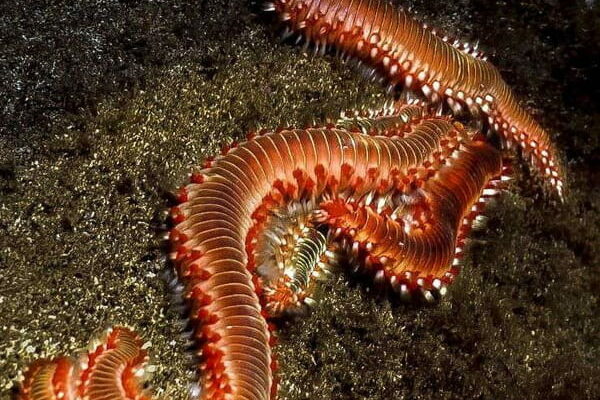“Fireworms” develop in the Mediterranean. One country is particularly monitoring the expansion of this species, especially as it can be particularly unpleasant for swimmers.
On a beautiful sunny day, there’s nothing like a refreshing swim in the crystal clear waters of the Mediterranean. But be careful, an unsuspected danger could well spoil this long-awaited moment of relaxation. And we’re not talking about jellyfish this time! Another marine animal could well come and spoil the joy of swimmers. Biologists from the Sicilian centers of Panarea and Milazzo, attached to the National Institute of Oceanography and Experimental Geophysics (OGS), are observing with concern the proliferation of a marine animal potentially dangerous for swimmers: the fireworm.
This marine worm was already present off the island of Malta and the coasts of the Maghreb but is now found in the sand and seagrass beds of the northern coasts of the Mediterranean, far from its natural habitat. Measuring between twenty and thirty centimeters long, the fireworm is distinguished by its bright colors, varying between red, green, gray, yellow and white. Don’t be fooled by its attractive appearance, as this worm is a fearsome carnivorous predator that feeds on animals and carrion.
For humans, there is no risk of being bitten, but the real danger of the fireworm lies in the white silk that surrounds it. It releases an extremely irritating venom on contact with the skin. The bites of this worm cause skin burns and swelling which can persist for several hours, sometimes accompanied by dizziness and nausea. Although not fatal for humans, the sting of the fireworm can cause significant and lasting discomfort, in the same way as that of jellyfish.
How can we explain the increasingly frequent presence of these worms in areas where they were not previously observed? According to biologists, the increase in water temperature, favored by the successive heat waves of recent years, is at the origin of the progressive migration and proliferation of this species. Originally from the warm maritime zones of the Atlantic Ocean, the fireworm is now well established in the eastern part of the Mediterranean Sea and is gradually moving northwards, particularly in the Tyrrhenian Sea.
If the presence of these venomous worms worries vacationers, it also poses a problem for fishermen. Fireworms are frequently found in fishing nets, attracted by the fish they feed on. Not only do fishermen have to take extra precautions, but they are also seeing increased fish mortality, putting their income at risk.
At present, no particular alert has been issued in France concerning the fireworm. However, with the continued warming of Mediterranean waters, it is very likely that this new unwanted inhabitant will expand its territory and become a growing threat to marine ecosystems, fishing and seaside recreation. If you see a brightly colored worm, no matter how pretty it is, keep your distance! Prevention is better than cure, especially when it comes to making the most of your vacation by the Mediterranean.
